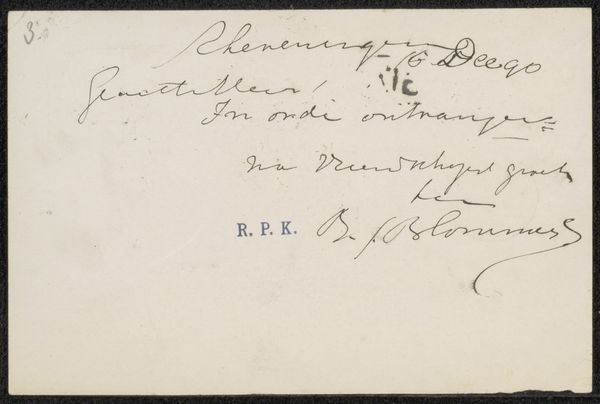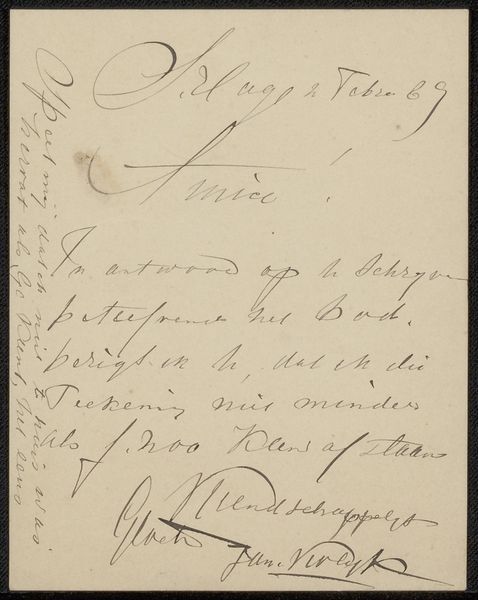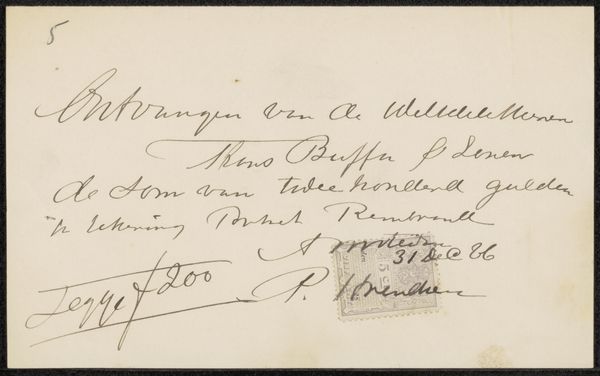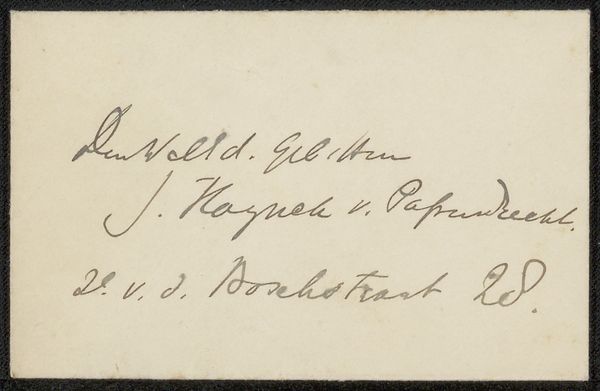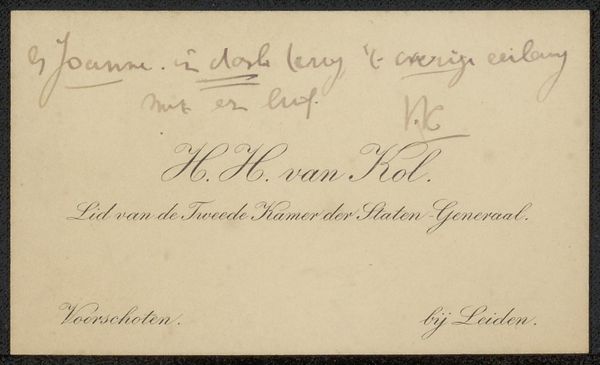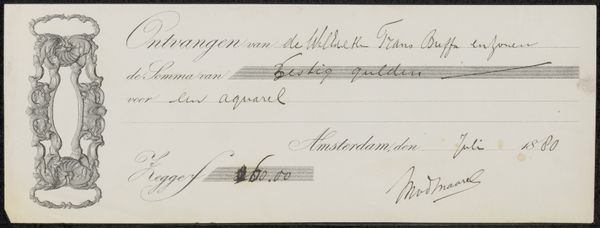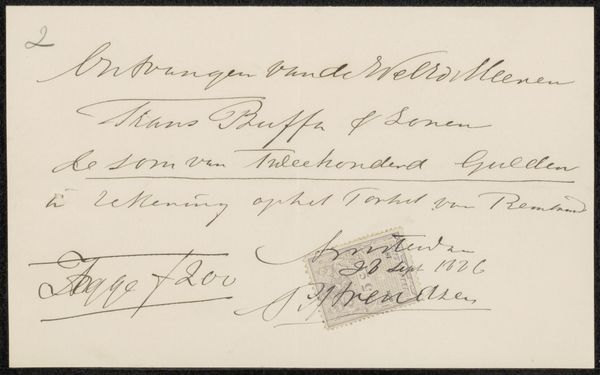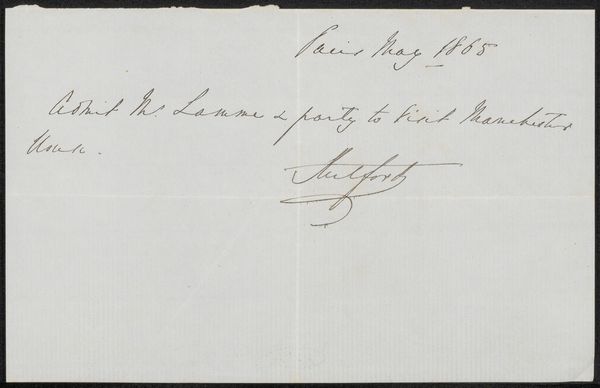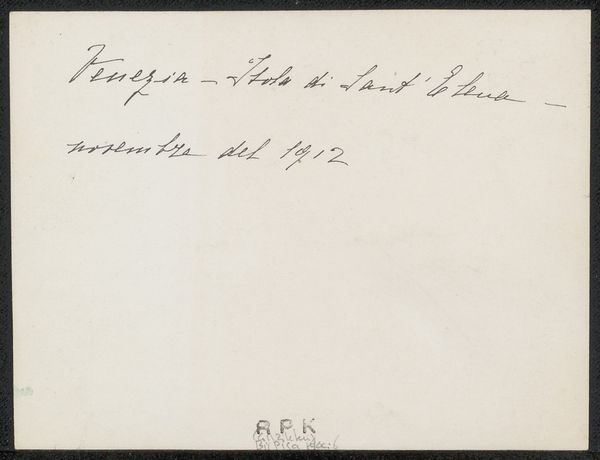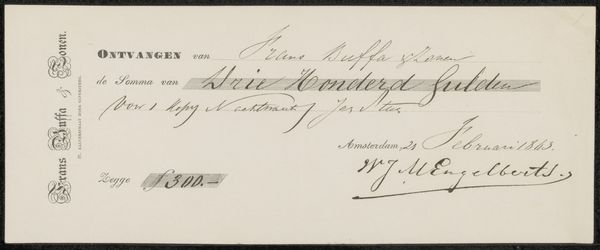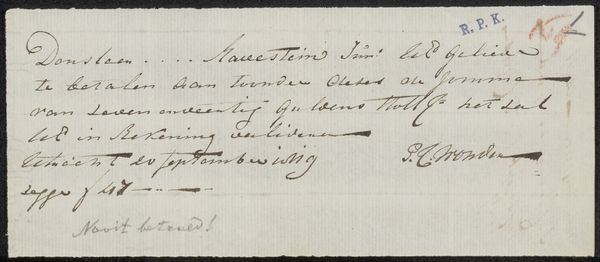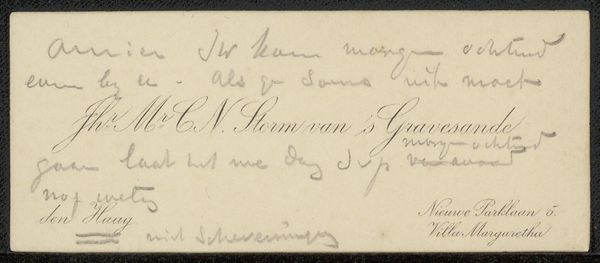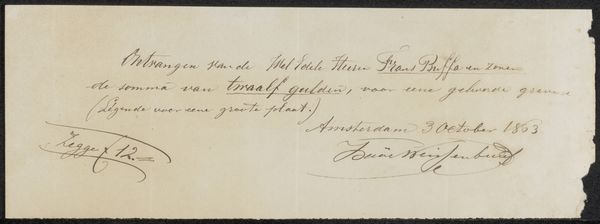
drawing, paper, ink
#
drawing
#
script typography
#
hand-lettering
#
hand drawn type
#
hand lettering
#
paper
#
personal sketchbook
#
ink
#
hand-written
#
hand-drawn typeface
#
thick font
#
handwritten font
#
calligraphy
#
small lettering
Copyright: Rijks Museum: Open Domain
Editor: So, this is Willem van Konijnenburg's "Visitekaartje aan Philip Zilcken," likely from 1905, created with ink on paper. It’s literally a visiting card, with some handwritten text, but the scripted font is almost like an artwork in itself. I’m struck by how personal and informal it feels. What do you see in this piece? Curator: I see a fascinating intersection of public persona and private communication. Think about the social rituals of the time – calling cards were a vital part of bourgeois culture, strictly governed by etiquette and status. But this isn't a professionally printed card; it seems handwritten, more intimate, even subversive in its deviation from the norm. How does the choice to hand-letter the card challenge the established social hierarchies it was meant to navigate? Editor: That’s a great point. The hand-lettering makes it feel unique, almost rebellious. It's less about adhering to social norms and more about expressing individuality. Is that typical of Konijnenburg? Curator: It speaks to a potential critique of standardization and mass production, prevalent themes within artistic circles at the turn of the century. Consider the Arts and Crafts movement’s emphasis on handcrafted objects as a form of resistance against industrialization. How might Konijnenburg’s choice of hand-lettering be interpreted as a similar assertion of artistic agency and a rejection of soulless, mass-produced calling cards? Editor: I see what you mean. It reframes something mundane into a statement about artistic values. Thanks, I would never have considered this artwork within the broader social movements! Curator: Precisely. And remember, these seemingly small acts of creative disruption can tell us a great deal about the cultural landscape and power dynamics of the time.
Comments
No comments
Be the first to comment and join the conversation on the ultimate creative platform.
